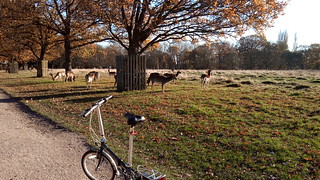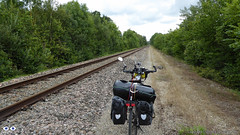(This post is "natively" only available in English)
This post is about my new gadget, but this is not a product review. I have no commercial arrangements of any kind with the companies involved (or any other company for that matter).
So why am I writing this? To let you know I’ve updated some of my tech in an attempt to produce better videos in the future and hoping the process I went through to select this camera could be beneficial to others as well.
If you are looking for a review there are hundreds of highly competent people and companies specialized in this field nowadays. To me, this is just a tool for a purpose.
Use the links below to navigate to the part most interesting to you, if you don’t want to read the entire post:
Reason for the upgrade.
Well, I’ve had many action cameras over the time I’ve been blogging. Even before the Blog I was already playing with the idea of recording bike rides and had a multitude of cheaper Chinese cameras just to play with, including a small Mini-DV camera, a Keyring camera and then a SJ1000, which was probably my first “real” action camera.
In 2015 as I decided to ride the French Way of the Camino de Santiago by bike, which was the motivational starter of this blog, I bought 2 new cameras: Initially a Sony HDR-AS30V, a mid-range Action Camera, which was to become my main action camera for a little over 1 year and a cheap SJ M10 from the same maker of the SJ1000, that today I use as my car’s Dashcam to record my journeys in case of an accident or similar (it’s small and works quite well). I blogged about these cameras in this post.
In 2016 as I was planning my Via Francigena bike ride to Rome, I then decided that I needed an upgrade as my main method of recording had become time-lapse mode and collating all the thousands of pictures generated by the Sony camera every 5 seconds (the lowest setting of the camera) was way too laborious and the results were disappointing to a certain extent. I was looking for a device that could record time-lapse videos i.e. take the pictures and stitch them altogether in the camera itself producing an “in camera” time-lapse footage and the GoPros of the time could do that. I then decided to buy a GoPro 4 Silver and not Black as both had this feature and it worked the same way in both, with the Black, being the higher end camera of the time, also capable of recording in 4K video mode, which I wasn’t very interested as I thought the significant price difference didn’t pay off. The GoPro 4 Silver became my main action camera ever since and I believe I managed to capture really nice images with it, with the only problem being the very shaky images produced since the GoPro 4s had no digital image stabilization at all (silver or black, very odd). I wrote about this camera in this post.
In 2017 I made another upgrade to address that stabilization weakness which was the Feiyu FY WG 3 axis Wearable Gimbal which helped significantly reduce the shakiness while recording video (time-lapse or not). Practically all of my rides were recorded with this combination (GoPro 4 Silver mounted on a wearable gimbal) until August last year when I was riding the Portuguese Way of the Camino de Santiago and as I was about to leave Coimbra in the morning when I was mounting my bike with the camera and the gimbal mounted on a chest mount, I accidentally bumped the camera + gimbal into the handlebar with force and the gimbal stopped working and has never worked again. I think the stepless motors of the axis were burnt. Well, shit happens when you are on the road… 🙁
So, I had no alternative, but to continue recording the journey without any stabilization at all and when I came back I decided that for my next cycling adventure I needed an update to my tech, after all the GoPro 4 Silver is now a 5 years old technology and we all know how quickly things become obsolete in this area.
Why this camera?
When I came back I had a lot of things to deal with in my professional life and I knew I wouldn’t be going on a new cycling adventure for a while, which gave me time to look for suitable alternatives at a price range I was willing to pay. From the start I looked into the GoPro product line for an alternative, but the nice thing for us consumers now is that this market is really saturated with options and in May 2019 a new company entered the action camera market which was DJI. Those who fly drones know this company well as they are the major drone manufacturers of the world.
Their device, called Osmo Action, had a similar spec to the GoPros, but a few interesting differences for people like me who would want to use their action cameras for other purposes as well, such as recording in “selfie” mode. The price difference of both offerings was not significant
I wasn’t in any hurry to buy a camera so I watched dozens of videos, not only of comparisons between the 2 cameras mentioned above, but also of other brands such as SJCam (the manufacturers of the cheaper action cams I started with). That made a decision only harder, to be honest. Even though cheaper Chinese manufacturers like SJCam offer fantastic options with lots of “Pro” features, I discarded going for one of them and turned my attention back to the market leaders as I focused on the requirements I had, the main one being the ability to record super stabilized videos in normal and time-lapse mode without the need of a mechanical gimbal and, among others, waterproofness, charging while recording, etc. Both cameras excelled in those, with the GoPro Hero 8 Black still having a slight edge on stabilization, it seems (it can, apparently, also stabilize HDR videos which the Osmo Action can’t).
Yet the DJI won me over because of the many positive reviews and videos I had seen, the improvements they made through firmware upgrades since launch and the fact that to capture still or videos in “selfie-mode” it has a little display in the front of the camera that allows you to frame the subject more easily without the need of a smartphone and its app, sorry GoPro… Also the fact that I am considering buying a drone in the future played a role in this decision.
Reviews about this camera.
If you are interested in learning about the specs of the camera or independent reviews, you may use the links below, part of my own market research about what camera to buy. I won’t add reviews to the GoPro here as it wasn’t the one I decided to go for and therefore have no self-knowledge about it.
If you are really interested, I recommend you search for YouTube video reviews as well
- Tech Radar’s Review
- Trusted Review’s Review
- Trusted Review’s lastest comparison between GoPro Hero 8 Black and the DJI Osmo Action.
Test Ride Videos with the Osmo Action
I received my new camera a couple of weeks ago, but during the current state of lockdown here in the UK I preferred not to go out on bike rides, even though a 1h out for physical exercise is permitted under the current rules. This past Saturday I decided I really needed to get out and I also had the perfect excuse to test my new gadget, so I recorded parts of the ride with the new camera, put a little video together and uploaded to YouTube.
Before you watch the video you must know that I the Micro SD card I was using on the GoPro 4 silver was too slow for the new camera (and the camera also warns about the card speed when turned on). I did buy a faster card, but it didn’t arrive in time, so although the camera did a wonderful job considering the card limitations, the resulting images might be affected by this fact.
I may record another test with the new card when it arrives.
The video below is a test of the Hyperlase recording mode of the camera. Recorded on the 6th of May 2020, two days after I published this blog post
The next video is a, “professionally produced”, marketing video done one year ago by DJI to introduce the device.
The few Pictures (Photos) I took with the DJI Osmo Action
I took only 5 pictures as this isn’t the reason I bought the camera for.
Hope this was helpful to you.
Thank you!
Do you like these posts? Why, then, don’t you pay me a coffee to help with the blog hosting cost and as a caffeine incentive to keep me going through the long hours of the night? (Suggested amount: £2.00 or USD $3.00 or 2.50€ or whatever you want to give). You may donate through my Patreon Page or through PayPal directly. ![]()
![]()



















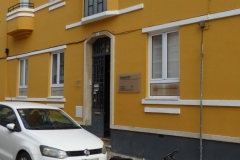






































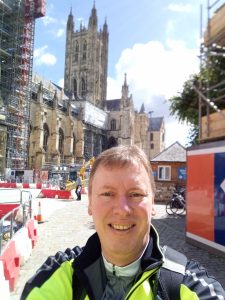
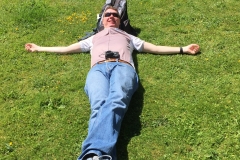


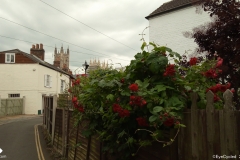














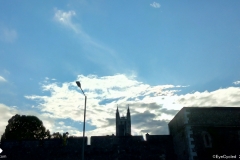



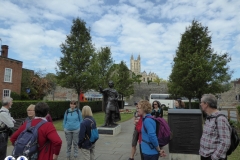




























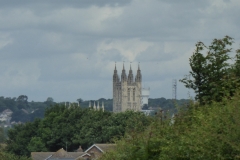




















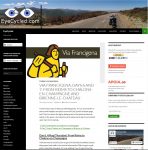





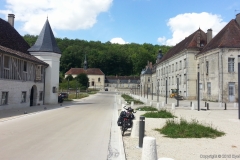



























































 As this post comes just two weeks from Christmas, I think it is appropriate to start by wishing you all a very Merry Christmas and a Happy 2019! I wish you a happy, prosperous, healthy and very happy new year with a lot of cycling activities, be them for pleasure, commute, travel or sport.
As this post comes just two weeks from Christmas, I think it is appropriate to start by wishing you all a very Merry Christmas and a Happy 2019! I wish you a happy, prosperous, healthy and very happy new year with a lot of cycling activities, be them for pleasure, commute, travel or sport.

